Winston Churchill once said “Of all the small nations of this earth, perhaps only the ancient Greeks surpass the Scots in their contribution to mankind.”
It is not clear what contributions Churchill had in mind when he said this but it probably wasn’t Highland toffee, ‘because, confectionary always tastes better when it is made at high-altitude’, as Stewart Lee wryly observed, or tartan lounge suits. He could, however, have included inventiveness in his litany of Scottish achievements without causing many eyebrows to be raised.
Scottish engineers, like John Logie Baird (television), Robert Napier (ship engines) and Alexander Graham Bell (telephone) changed countless lives with their inventions and Alexander Henry (patent seven-groove rifling), Rev. John Forsyth (percussion caps) and Major Patrick Ferguson (the first breech-loading rifle used by the British army) helped to ensure the effective demise of countless quarry, both human and animal; thereby strengthening Britain’s hand in a nineteenth century race for power and global influence.
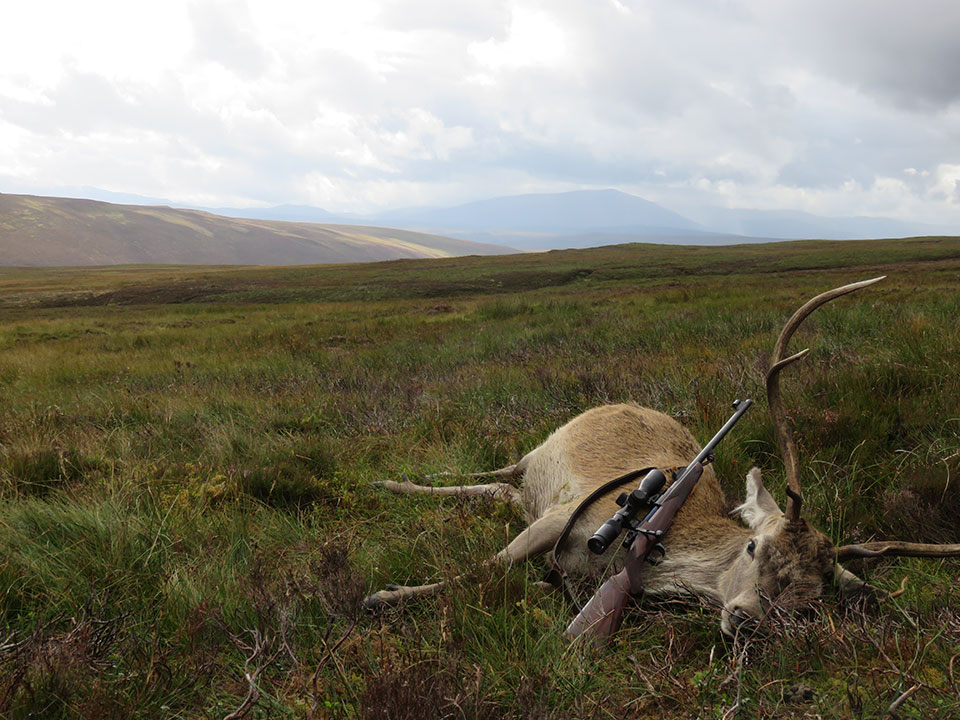
Rifle development in the 19th century was a serious business. National security and financial independence, depended on Britain’s ability to equip its armies with reliable, fast-firing, robust and accurate rifles, while the nation’s sportsmen demanded increasingly effective and beautiful rifles for hunting and target shooting.
Rifles moved from being slow to load, susceptible to the vagaries of the weather and inaccurate beyond 100 yards, to becoming reliable pieces of precision equipment capable of killing a man at a thousand yards, in skilled hands, in less than half a century. Scots were the key inventors of many of the contributory steps along the path of development and Scottish rifle-makers were prominent amongst those creating sublime sporting arms and military weapons.
Red stags on the hill were, doubtless, the intended quarry of many Scottish customers and they were loyal to their local makers; spurring them on to make ever-better stalking rifles. However, as we shall see, Scotland’s rifle makers had ambitions to be influential far beyond their own borders.Though few in number today, they come from a long, uninterrupted line of excellence in the field.
Alexander Henry
Alexander Henry is un-thinkingly mentioned in many a casual conversation. Anyone who has seen the 1964 film ‘Zulu’ will recall the words of Lt. Chard at the end of the film ‘If it’s a miracle Colour Sergeant, it is a short-chamber Boxer-Henry point four-five calibre miracle”, referring to the Martini-Henry’s contribution to the survival of a garrison of 150 facing down over three thousand Zulus at Rourke’s Drift in 1878.
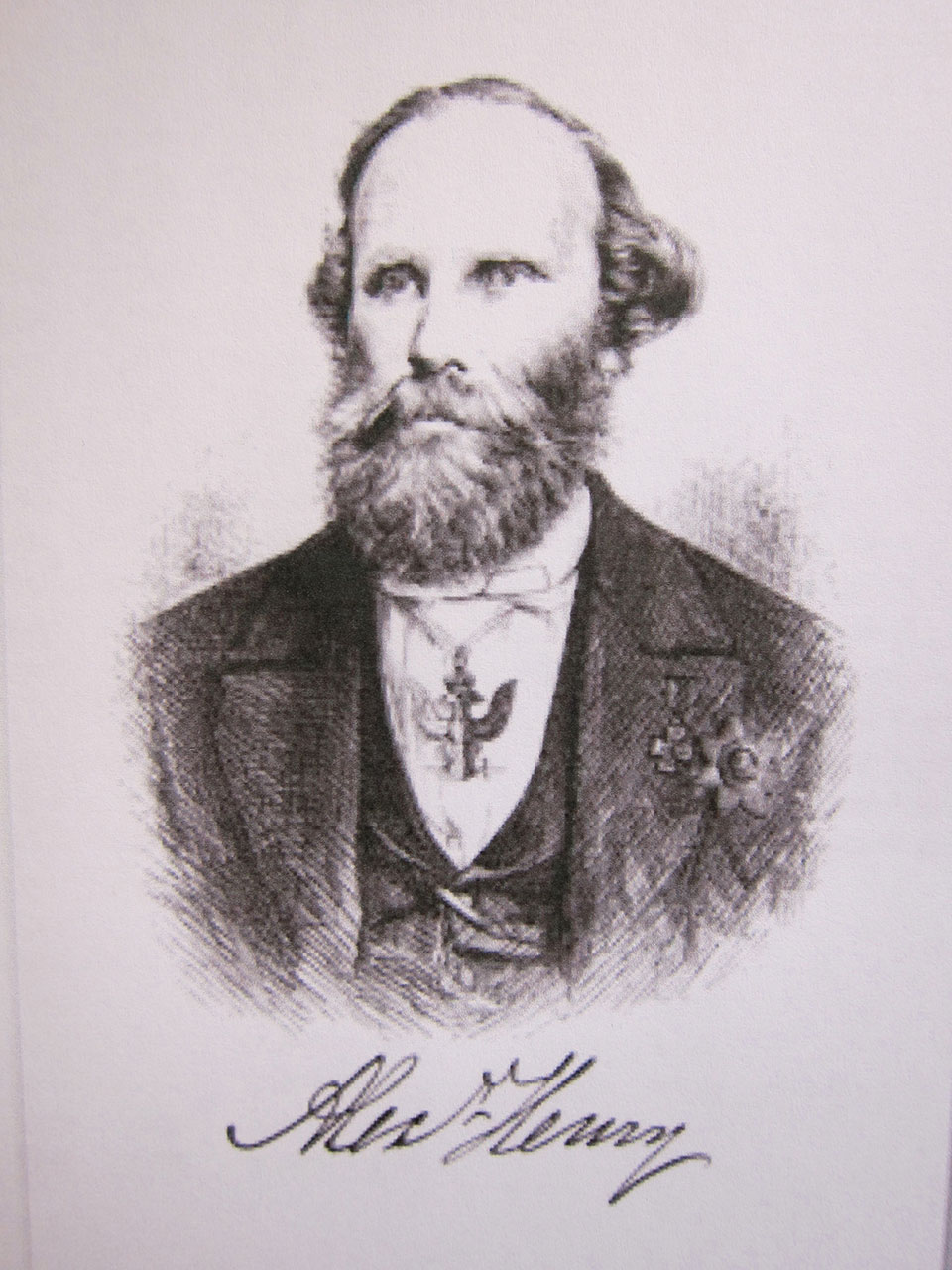
The Henry reference is to Alexander Henry’s seven-groove rifling, which was mated with the Martini tipping-block single-shot rifle action, adopted by the British Army in 1871, eight years earlier.
With 85 grains of black powder propelling a 480 grain lead, paper-patched bullet at 1,350 fps, the Martini-Henry had an effective range of 400 yards in battle but was capable of engaging advancing troops at 700 yards, when used in a volley-fire tactic.
General Sir Arthur Cunningham reports witnessing a Sergeant Instructor of Musketry kill a ‘Kaffir’ with an aimed shot at 1,800 yards during the 1877-’78 Kaffir Campaign in South Africa. However, Henry was a rifle maker of distinction himself and his sporting rifles are sublime.
Perhaps the quintessential Henry sporting rifle is the falling block-single barrel hammer rifle with under-lever. Henry built over 2,500 of these, in a wide range of calibres, between 1865 and 1910. They are beautiful, robust, accurate, reliable and made to the very highest levels of quality and precision at a time when gun-making bench-work was arguably at its most accomplished.
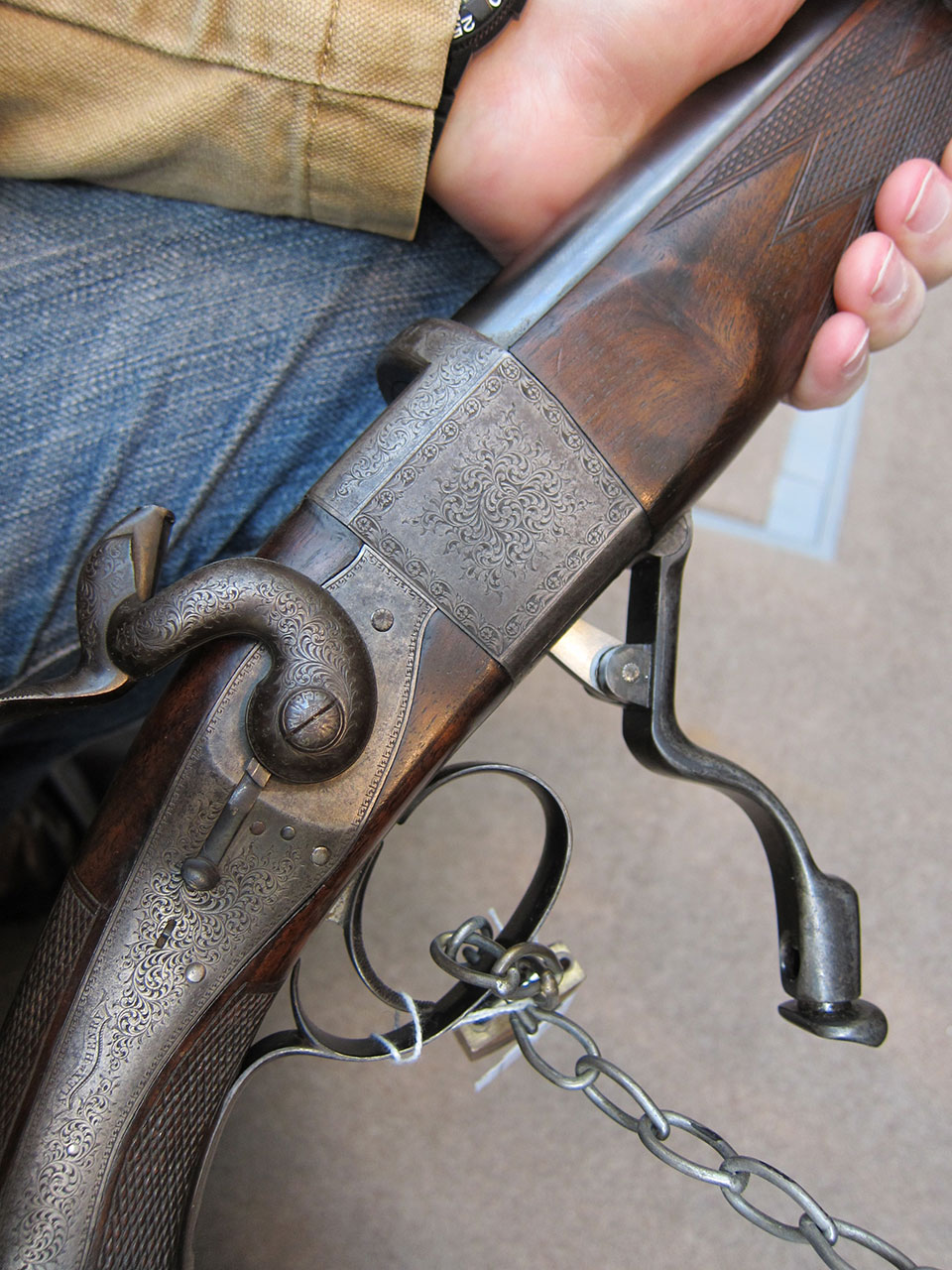
Henry falling-block rifles were built on four sizes of action; listed as Small, Standard, Large and Massive. Chamberings ranged from .256 up to 12-bore. Until around 1880, most of these had the lock on the left side, which Henry thought made loading easier for a right-handed shooter. for some reason, during the 1880s, we see more right-hand lock rifles made, though left-hand lock versions continued to be made alongside them.
When hammerless designs generally took over from those with external hammers, Henry fell foul of a dispute with John Farquharson over his 1872 patent hammerless rifle, which, it is speculated, the latter likely stole from the former during repeated visits to his workshop.
So, most single-barrel, falling-block Henry rifles are of the external hammer variety. His hammerless double rifle, built on an elegant back action design, however, proved popular from its introduction in 1882. This was Henry’s own patent; a variation on the Jones under-lever, incorporating a cocking mechanism, which automatically cocked the internal hammers when the lever was rotated to the right.
After Alex Henry died, in 1894, the company started, like many others, to use generic Birmingham actions for many of its guns and rifles. While some fine rifles continued to be made in the twentieth century, Alex Henry’s heyday ended with the death of the founder. In 1902 the company was taken over by Alexander Martin of Glasgow.
James MacNaughton
Although Dickson is the better-known Edinburgh gunmaker and, perhaps, most associated with round-action guns, the design originates with MacNaughton’s patent of July 1879. It hit the patent office just as the British were mopping-up after victory over the Zulus in South Africa (and giving thanks to Henry rifling).
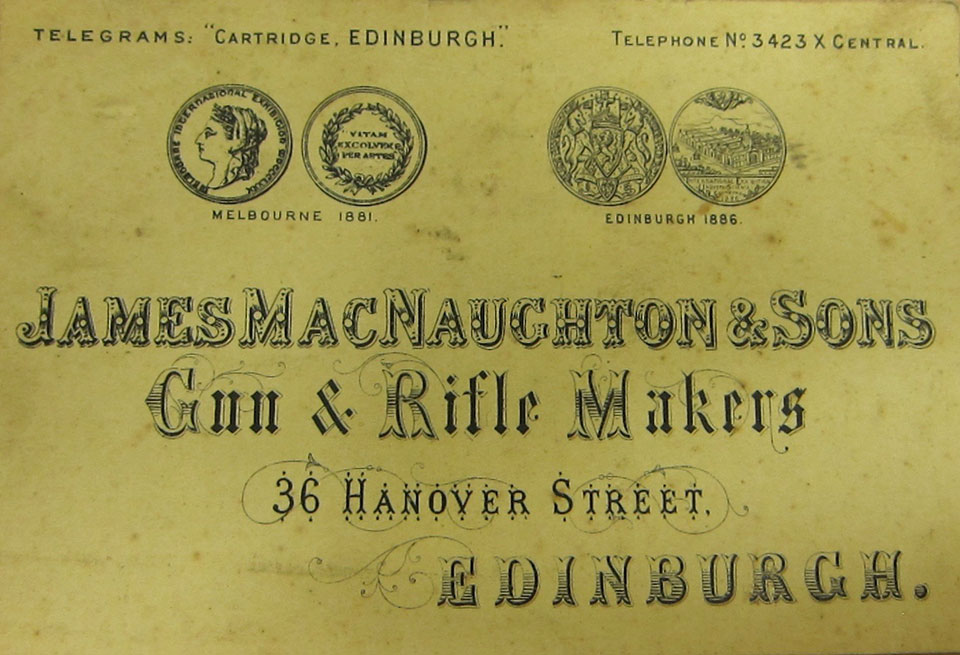
MacNaughton cannot take all the credit; the trigger plate design that inspired him came via his friendship with Julius Coster, an exiled German gun maker, who worked for Alex Henry for a time. Coster’s father was making drillings and shotguns in his home country, using trigger plate actions. MacNaugthon, a successful gunmaker, with thirteen employees at the time, saw the potential. The key wording in his patent reads; ‘…a new general arrangement of limbs or work of the lock on the trigger plate, with the hammers ranged near the centre of the gun, and all removable with the trigger plate by the unscrewing of three screws…’
The gun built on this patent was pleasingly rounded in the bar and attractive, with good weight distribution and inherent strength. Early MacNaughtons were cocked by the long top-lever, but barrel-cocking replaced this system in the 1890s.
MacNaughton guns and rifles of the period are engraved with the name James coined for his action; ‘Edinburgh’, as well as his own name. James MacNaughton died in 1905, which may be why we still think of Dickson first when round-actions are mentioned.
For an example of the ‘Edinburgh’ as a double rifle, we can look at a rare example sold at auction a couple of years ago. This is a lever-cocking bar-in-wood version made as a .450 (3 1/4”) BPE rifle. It is the seventy-fifth use of the 1879 patent and has MacNaughton’s patent crystal windows, showing the hammers to be cocked or at rest.
Weighing 7lbs 14oz with 28” barrels and a 14 1/2” pistol-grip stock, it is leaf-sighted for 100 and 200 yards. Quality, balance, detail and proportion are exquisite. Someone paid £16,000, plus around 30% commission for it, which puts it on par with a good 1920s Purdey side-lock 12-bore. The difference is; there are lots of Purdeys around. You will struggle to find another MacNaughton rifle like this.
With the owner’s death and the company’s absorption into John Dickson & Son, rifle development stopped. However, the round action double rifle would be carried-on by two other makers, right into the twenty-first century.
John Dickson
In his early years in business, John Dickson had been a pioneer in rifle design. His 1840, two-groove, rifle established his reputation and was both successful and influential. Renowned hunter Gordon-Cumming called his ‘… the most perfect and useful rifle I have ever had…’.
During the 1850s about a third of Dickson’s production consisted of rifles, which were beautifully finished, elegant and accurate. By the 1860s, Dickson was specialising in long-range target rifles and enjoying a good deal of success with them.
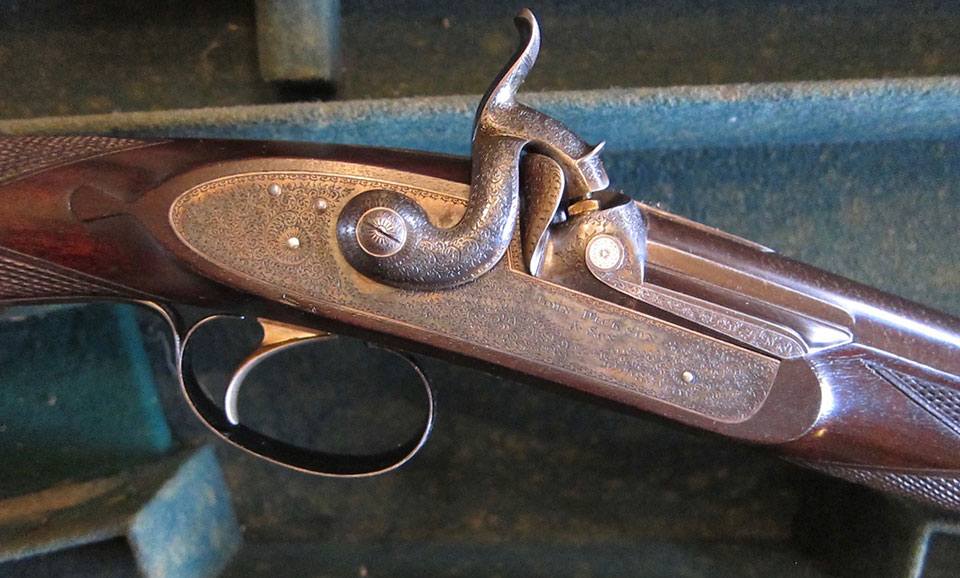
These were generally single-barrel rifles with an external hammer and percussion-cap ignition, of .52 bore. Incredibly, these heavy, muzzle-loading rifles, weighing around 9 1/2 lbs and equipped with special sights, were accurate to 1,100 yards.
Dickson also produced double rifles during this period, often beautifully fitted into pigskin-lined oak cases, with all their accessories. Percussion rifles continued to sell well past the 1851 introduction of pin-fire, indeed they were still being made in the 1860s, after centre-fire rifles had begun to make serious inroads.
Dickson’s clients were predominantly Scottish aristocracy but in the days of Empire that also meant equipping them for overseas trips and the record books show orders for 10-bore, 8-bore and 4-bore double rifles as well as for the more common 30-bore deer stalking rifles intended for the Scottish hill.
In the 1870s, Dickson made mostly centre-fire double hammer rifles with Jones under-levers, while he also sold twenty-two Henry-patent, falling-block rifles, which he bought as barrelled actions and made-up in-house.
I once owned a Dickson 10-bore double hammer rifle with a side-lever, made in 1877. Dickson’s rifles were predominantly made to ‘best’ quality. This was exceptional.
In the 1880s, Dickson saw the advantage applying a ‘Scottish’ identity to a distinctive design and set about getting one for himself. He lodged his patent 294 of January 1880. Very like the MacNaughton, this would become the Round Action for which the firm is best known today.
Following a convention of the Victorian era, when fathers named their sons after themselves, a ‘John Dickson’ managed the family business through more than one generation. It was the third John Dickson who designed this round-action.
The key part of Dickson’s patent was the cocking-slide and the instructions as to how this could be fitted to a trigger-plate action. Further patents were taken out to provide ejectors and three-barrelled versions of the round action.
Best known as a shotgun, though the round action also lent itself to double rifle manufacture, Dickson built a total of only fourteen. A further nine were build as single-barrel rifles. However, Dickson also made and sold twenty double-rifles built on Anson & Deeley boxlock actions and eighteen boxlock rook rifles.
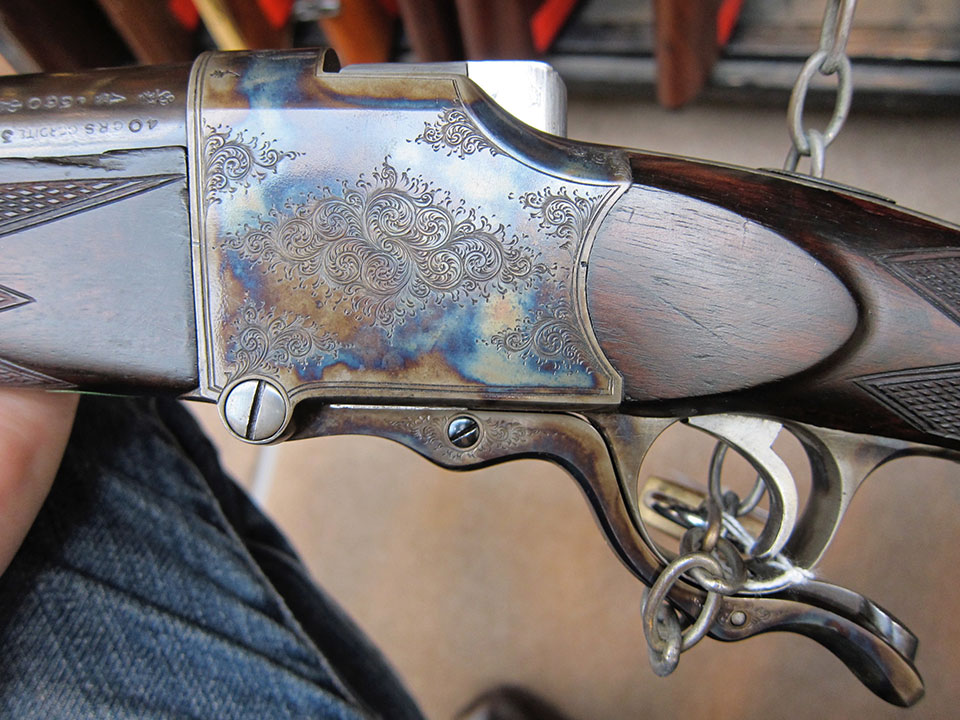
David McKay Brown
David McKay Brown, aged eighty, is approaching retirement today but he can look back with satisfaction on having created a new gun and rifle-building company, without recourse to a famous name, and providing himself with a solid income and enviable reputation during a lifetime at the bench. Like Dickson & MacNaughton, David specialised in ‘Round Action’ guns and rifles.
Founded by twenty-five year old David McKay Brown in 1967, when his employer, John Dickson, refused his request for a £4 per week pay rise, David opened his own business, doing repair work and fitting new barrels for Dickson. He decided to try building new versions of the famous ‘round action’ shotgun and his first attempt was so good Dickson asked him to build round action guns for them to sell as their own.
The relationship soured, however, and David began selling the round action guns he made under his own name, much to the surprise of the establishment, and has continued to do so. His total output amounts to 780 guns and rifles.
He has built round-action rifles in calibres from 9.3 to .600 N.E. Until recently, he offered .375 and .470 N.E versions. McKay Browns look very like Dicksons. The distinctive top-lever shape, the rounded bar and fences, all look classicly Scottish.
The benefits claimed for the round action include the strength advantage of having a solid bar, save for two narrow ejector holes. Barrels are bolted with three bites: a conventional Purdey double-bolt engaging the bites in the lumps (which are wider than a normal side-lock). The third bite is on a top-rib extension.
The positioning of the sears enables trigger pulls to be set precisely and crisply. For double rifle use, McKay Brown offers a pistol grip stock with cheek-piece.
Critics of the round action point to the slim fillets of wood either side of the triggers, necessarily hollowed out to make way for the trigger plate and all the internal lock-work. It could be argued that what the round action gains by having a very strong-for-weight action, it loses in having a relatively vulnerable stock around the head. For double rifle use, a long top-strap can be employed to strengthen the connection.
I recently had a McKay Brown .470, one of only three that I’m aware of in that calibre. The rifle is a chunkier version of the round action shotgun, yet, even scaled-up, it feels lively, point-able and instinctive: all essential characteristics of a perfect double rifle.
Having faced-down dangerous game in several parts of Africa, I’d be pleased to have McKay Brown’s rifle as my companion. Not only does it feel capable and beautifully fit for purpose, one cannot help but feel that campfires would be enhanced by its presence in the gun rack, the lights and shadows of the flames flickering on its beautifully figured woodwork and across the graceful, yet purposeful contours of the round action. It looks made for work, but its beauty enhances the experience of use.
Daniel Fraser
The gun and rifle making business of Daniel Fraser has been dormant since it scaled back in-house rifle production in 1911 and then officially closed its doors in 1917. The business had a brief sojourn in the 1990's with the delivery of a number of hand-finished commercial rifles before it was amalgamated with John Dickson and Son in 1997.
2019 saw the business of John Dickson and Son change dramatically with new ownership and fresh initiatives for the various gun and rifle making names under that brand. One of these projects was the return of Daniel Fraser as a premier Scottish rifle maker with the reintroduction of the Fraser bolt-action rifle in the form of a lightweight hill rifle.
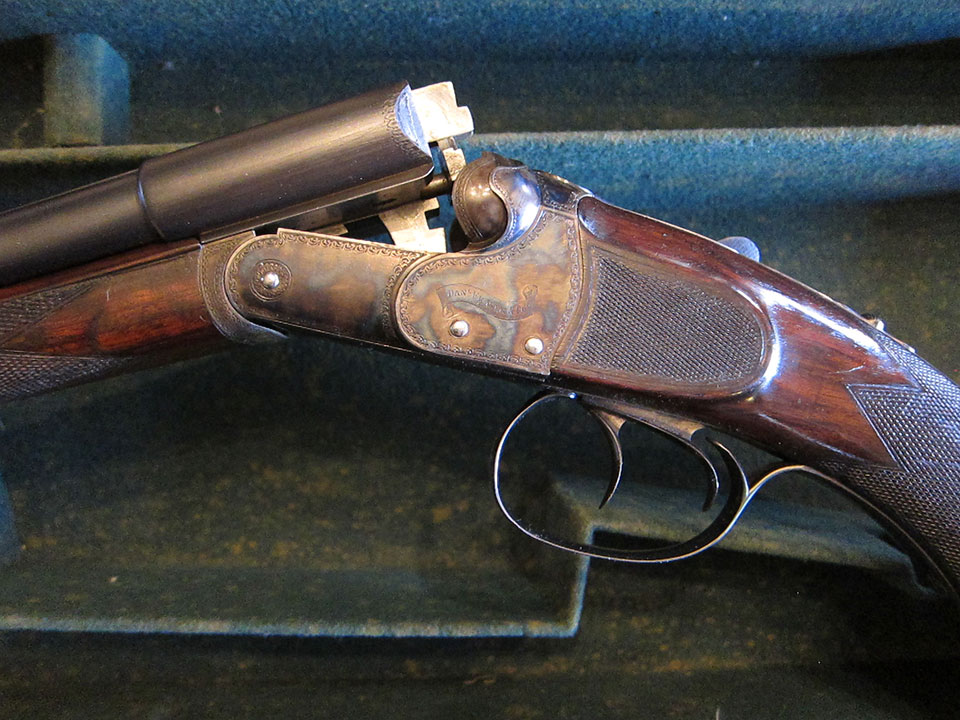
The objective was to build a rifle incorporating much of the vintage Fraser styling - such as the hour-glass shaped magazine box, bolt release catch and butter-knife bolt handle but also to introduce some updated styling cues in the form of Fraser style sling swivels, scope mounts and the return of the D. F & Co. 'Castle' trademark.
The rifle’s platform is the Mauser ’98 action and all work to assemble and finish the rifle is conducted in Dickson's workshop in Dunkeld, Scotland.
The first rifle was delivered in 2020; a .22 Hornet, built for a client who had already taken delivery of a re-furbished vintage Fraser .275 Mannlicher-Schoenauer rifle the previous year. Following closely, in 2021, will be the delivery of several new rifles in .243, .275 and .308.
Other projects within the Fraser fold include a patent falling-block, single-shot rifle and small-gauge, Fraser patent, boxlock shotguns. However, the disruption caused by the COVID global pandemic has delayed the launch for at least another year.
Daniel Fraser’s revival, though interrupted, is certainly not over. We should expect to see regular deliveries of new models over the next few years and the order books for new, Scottish-built, Fraser rifles are open once again.
Alexander Martin
The Glasgow firm, which eventually too over Alex Henry, was founded in 1778 making various metal components, including gun parts and cutlery, it was not until 1835 the firm became ‘gun-makers’. By the 1850s Martin was making rifles and casting rifle barrels.
With shops in Glasgow, Aberdeen and Bisley, The third generation of Alex Martin gained a reputation as a rifle maker in the late 19th and early 20th century, especially target rifles based on the common Lee-Metford and Lee-Enfield military actions, as well as making breech loading rifles in .256 calibre. They also made and sold target rifle sights.
Martin was sold to John Dickson & Son Ltd. in 1965 but continued to trade as Alex Martin until 1988, when the last shop, in Glasgow, closed. Though Alex Martin did sell shotguns, they were probably bought-in from Birmingham; certainly, A.A. Brown built guns for them in the 1950s and ‘60s. Their most notable model being the ‘Ribless’ Gun, which dispensed with full top and bottom ribs to reduce weight.
Martin was always best known as a supplier of rifles and fishing tackle. Now, part of the John Dickson & Son family of businesses, there are currently no plans to open the books to new orders.
The Future
The remarkable conclusion drawn from this perusal of Scottish rifle makers, past and present is that, varied and proud as the history is; today, traditional Scottish rifle making is in the hands of one man.
That man is Jean-Pierre (‘J-P’) Daeschler, proprietor of John Dickson & Son. When he bought Dickson, he also got the other makers that the company had bought over the course of the last half-century, or more. Today, it includes James MacNaughton, Daniel Fraser, Alex Martin and Alex Henry. The newly structured group of companies began production with Dickson round actions and MacNaughton skeleton action guns. There are no plans to build rifles on these platforms, yet.
With the revived Daniel Fraser delivering Scottish-built, bolt-action stalking rifles already, we can be confident that growth will continue. Personally, I’d love to see traditional Alex Henry falling-block hammer rifles make a re-appearance.
With modern machinery so well suited to making the basic parts kit for this kind of action, there is no reason to think it could not happen. However, any such project must wait, while current production models help the company balance the books over the next few years.
We have seen, through the fortunes of the revived Rigby, in London, how a properly-managed company producing traditional, historical models, with integrity and fine customer service, standing behind great products, can succeed.
I’m confident that Scottish rifle-making is here to stay and, though currently hanging on by a fingernail, it has a bright future. J-P, if you are reading this, I’d like my Alex Henry falling-block in .275 please.
Published by Vintage Guns Ltd on




